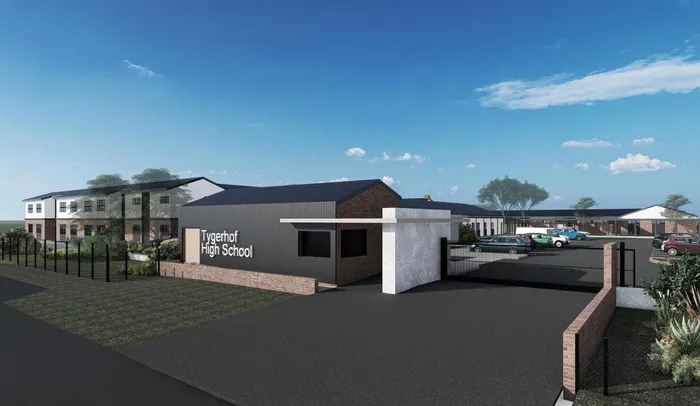Tygerhof high school plan causes concern

A model design depicting Tygerhof High School. Construction is expected to start in April and completed in January 2027. PICTURE WCED
Image: Bheki Radebe
Tygerhof residents are concerned that a new high school planned for the area will add strain on the area's infrastructure.
The Western Cape Education Department (WCED) held an information session on Wednesday March 12 where they presented plans for the new high school, which will be situated on a 1.7 hectare site and designed to accommodate 1 120 pupils across 30 general and four specialised classrooms.
The National Treasury funds the school with specific requirements, including a focus on science, technology, engineering and maths (STEM) subjects.
Construction on the estimated R125 million project is planned to begin in April with the school opening in January 2027, in a phased approach starting with Grade 8 pupils.
During the community engagement meeting, residents raised concerns about potential impacts on infrastructure, particularly traffic, sewage capacity, road conditions, and management of pupil behaviour outside school premises.
Representatives from the WCED, including Wesley Vorsatz, who is an infrastructure planner, acknowledged these concerns and committed to working closely with the community, promising to address infrastructure challenges, engage with City authorities, and ensure the school's development considers residents' perspectives.
They said the aim was to build a quality educational institution that benefits the area.
Tygerhof Residents' Association chairperson, Garron Gsell, said with more housing development being built around and more people moving in, especially the younger generation who have their kids at primary schools, clearly there is a need for another high school.
However, he said, Tygerhof residents are facing a high volume of traffic caused by motorists rat running during peak hours and cross from Ratanga Road to Koeberg Road by using Pringle Road and Tijgerhof Street.
“The existing traffic-calming measures are not helping especially when residents are complaining that they can't even pull out from their driveways in the mornings because the traffic is too intense.”
Mr Gsell said as much as legitimate development is welcome, the rise of developers who continue to build illegally makes the situation worse where there are more residents or tenants, on what is classified as single-resident property, using the same infrastructure that was placed when the suburb was established.
He said while schools are needed, there is a strong need for a more robust approach in addressing the infrastructure problem rather than putting a band-aid on it.
“We need to apply our minds and critical thinking to invest in the existing infrastructure, and create the infrastructure to facilitate these types of developments which are increasing," said Mr Gsell.